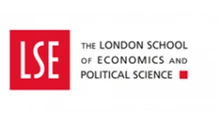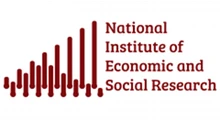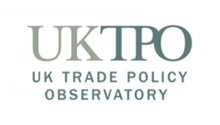Headlines about China are dominated by the vagaries of trade war with the United States. Beyond those battles, there are big issues around consumer spending, the real estate market, the Belt and Road Initiative, and the role of technology in the country’s growth prospects and national security.
The current confrontation between China and the United States is no longer just about tariffs. The latest fronts in the emerging trade and technology war include the access of Chinese students to US universities and the access of Chinese companies to advanced chips. All will have implications for China’s growth prospects, its economic and political interactions with the rest of the world, and its government’s approach to self-sufficiency and national security.
This week at the Economics Observatory, we have looked at China’s economy beyond the immediate disputes with the Trump administration. A series of new articles explores domestic economic concerns, investment overseas through the Belt and Road Initiative, and the economic, technological and geopolitical implications of the semiconductor industries in both China and Taiwan.
Domestic challenges
Projected at around 4-5%, China’s GDP growth rate for 2025 would be the envy of many economies around the world. But this is a long way from the peak of 14.2% in 2007 and the Chinese economy is still suffering from ‘fatigue and malaise’, according to George Magnus (University of Oxford) in his new Observatory piece on how China’s economy is currently faring. (He also wrote for us earlier this year on how China-UK relations might evolve.)
First, the country continues to suffer from sluggish consumer spending – at around 40%, this is significantly below the level in many advanced economies as well as in China’s middle-income peers. Indeed, figures from late April revealed the biggest drop in export orders since the Covid-19 pandemic.
Second, George highlights the downturn in China’s real estate sector, where market prices have fallen 20-30% since the housing peak in the summer of 2021 and private developers are going bust or becoming ‘operationally impaired’.
Combined with an ageing population, declining tax revenue and the uncertainty of the trade war, China’s economy faces a challenging future. Indeed, as George points out, the recent uptick in the country’s growth rate can be largely attributed to sustained government stimulus measures, which have had mixed results to date.
At its spring meeting, the Politburo (the executive committee of the Communist Party of China) stressed that it would focus on building resilience in China’s economy. And as George notes, ‘China could probably soldier on’ with continued stimulus, effective monetary policy, and exporting more via third countries. But for now at least, double-digit growth is a thing of the past.
Global ambitions
The Belt and Road Initiative (BRI) – the focus of an Observatory piece by Linda Calabrese (King’s College London and ODI Global) – is another means by which China has boosted its economy and global reach.
At home, the initiative has been a mechanism for trillions of yuan of investment, for economic development in rural and coastal regions, and for huge capacity increases in construction, bringing a major boost to the nation's infrastructure. The BRI has also offered Chinese firms the opportunity to internationalise and even financial incentives to do so.
Abroad, recipient countries – those that have received loans or hosted Chinese industrial parks – have seen major investment: $1.34 trillion in total between 2000 and 2022. The BRI has also funded significant infrastructure development across the global south, from hydropower to railway lines.
But as Linda points out, the initiative has faced criticism over debt sustainability, insufficient transparency, and social and environmental concerns in recipient countries. The outcomes have not all been positive either, with some investments being linked to increased inequality or even illegal activities.
With China’s foreign direct investment declining – from a peak of $196 billion in 2016 to $177 billion in 2023 – Linda argues that the future of the BRI will be on smaller and more targeted projects that are ‘economically viable’ and have ‘positive environmental, social or political impacts’.
Chips with everything
The technology sector, semiconductors in particular, has been another big area of investment for China, as detailed in another new Observatory piece by Jiawei Steven Hai (King’s College London). Sitting at the heart of most modern technology, whether in our pockets or on our roads, Beijing has recognised that chips are vital to both economic growth and national security.
China’s semiconductor industry took root in the cold war and has made significant strides in the decades since, particularly in mature nodes (an older but still vital technology). But the 2010s brought a major acceleration and drive for self-sufficiency following the imposition of US export controls that highlighted China’s vulnerability.
Nevertheless, challenges persist, including export controls, talent shortages and reliance on foreign technology. As Jiawei argues, there is a careful balance that China must maintain between self-reliance and global integration, which brings the benefits of knowledge exchange, international markets and technology transfers.
This interplay between technological innovation and national security is perhaps clearest when discussing Taiwan – the subject of an Observatory article by Kerry Brown (King’s College London), as well as earlier pieces on Taiwanese business and global supply chains.
The island is a powerhouse in chips, led by the Taiwan Semiconductor Manufacturing Company (TSMC), which alone is responsible for 8% of Taiwan’s economic output. Kerry sets out the interlinked economic development of Taiwan and TSMC, emphasising the government’s drive to bring together the state and the private sector and the decision to specialise in chip technology and production rather than sales to end-users. As he states, ‘this relentless focus’ has made TSMC the 11th most valuable company in the world, with a market capitalisation of $972 billion.
But there are mixed views on what this means for Taiwan’s security and relations with China. Some identify a ‘silicon shield’ where Taiwan’s semiconductor industry provides protection as Beijing would not want to cut off its, or indeed the world’s, supply of chips; while others see the presence of such valuable technology on an island that China sees as its own as motivation to take more assertive action. As Kerry stresses: ‘What the presence of TSMC does do is to complicate an already complex situation’.
Shifting landscape
Trump’s trade and foreign policy outbursts add a further layer of complexity to the economics and politics of East Asia. The exorbitant tariffs intermittently threatened on China’s exports would harm both the Chinese and US economies. President Xi Jinping has stressed building resilience, but extending current stimulus measures would require significant financing.
While funding for the Belt and Road Initiative has decreased in recent years, foreign direct investment remains a mechanism through which China can have greater global influence, especially as others, including the United States, step back. Similarly, the expansion of Chinese exporting via third parties if the trade war continues is likely to alter the map of global economic interactions.
Finally, the rise of artificial intelligence, electric vehicles and military technologies has put semiconductors (and the technology sector more broadly) at the nexus of economic growth and national security. Amid rising geopolitical tensions, China will not be alone in having to weigh up the advantages of global integration and information-sharing with the potential need for self-reliance.









































